Module A: Define a strategy to stand out on Instagram
This module will guide you step-by-step to create an effective strategy that differentiates you from the competition. Start by learning how to perform a thorough audit of your Instagram account, an essential step to identify opportunities for improvement! You’ll also learn how to analyze your competitors using tools such as Metricool, which will allow you to understand what others are doing well and how you can outperform them. Use this knowledge to help you define a strategy that works and is aligned with your brand goals.
1. How to audit your Instagram account
1.1 What is an Instagram audit?
Think of an Instagram audit as a health check of an account. It’s a process where you review and analyze everything you’re doing on Instagram to understand what’s working, what’s not, and how you can further improve.
1.2 How often should I audit my Instagram?
There is no set answer here. It’s always a good idea to audit your profiles periodically. We recommend every 6 months to a year. This will prevent your profile from becoming stagnant and you will be able to make timely decisions.
Social media changes often so it’s just as important to let some time pass to get a more accurate view of how your account is performing.
Additionally, there are key moments when it is necessary to perform an audit of your account, take note:
- When you start running an Instagram profile that already exists. If you work as a social media manager and you’re taking on a new client, the first thing you should do is analyze the status of their accounts through an audit.
- When changing a company’s or brand’s marketing strategy. If the current strategy is not achieving the results you desire, it is necessary to create a new action plan. This marks a good time to audit your profile. This will give you a clear indication of what content is working and what isn’t so at the very least you don’t have to start entirely from scratch.
1.3 How to perform an audit of your Instagram profile
This template will serve as a guide to conduct an audit of your Instagram profile. In the template, you’ll find editable fields for you to input your data as well as an example of what a completed audit would look like.
To extract the data for this audit you have two options:
- Instagram Insights, where you’ll jump from one screen to another to find your main metrics and you’ll only be able to pull your data up to 90 days back.
- Metricool, where you can access all your data from a single screen (and not just from Instagram too 😉) and access unlimited historical data on premium plans, or 90 days, on the free plan.
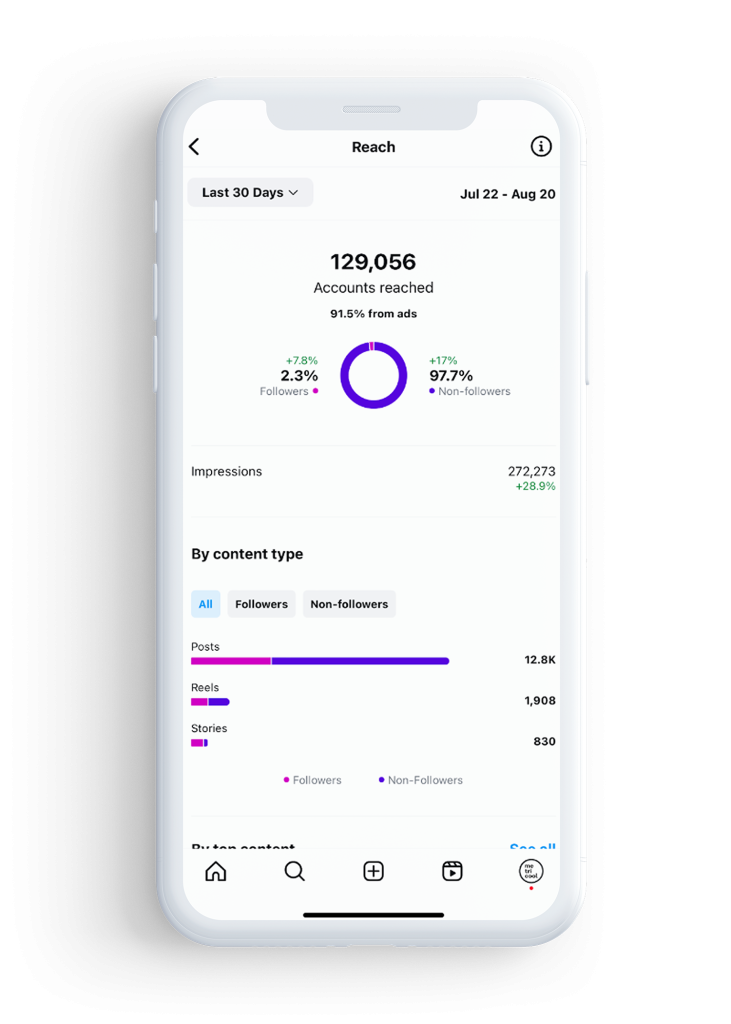
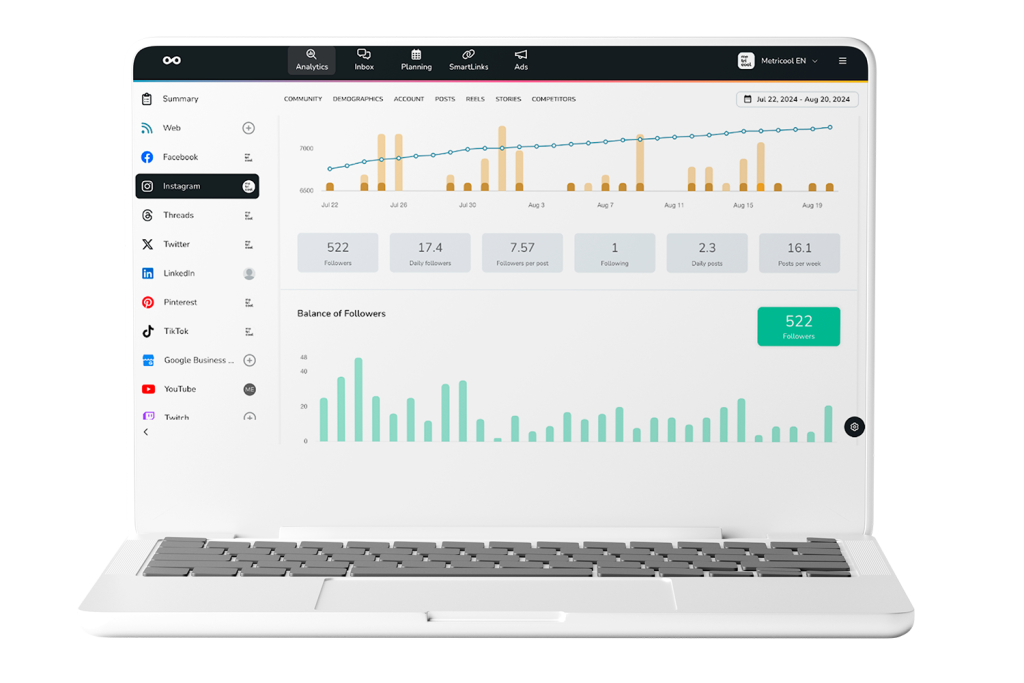
The template has an instruction manual as well as an example but if you’re looking for even more guidance, you’ll want to make it through to the end of this module.
2. Analyze your competitors on Instagram
Analyzing your competitors on Instagram will make all the difference in your strategy. This step will allow you to compare your performance with your competitors to find opportunities and areas for improvement.
For this analysis, we have another template up our sleeve that will save you hours. Download it here.
But before you get started with benchmarking, you need to define some key points:
2.1 Your objectives
What do you want to achieve with benchmarking? Increase your followers? Improve traffic to your online store? Increase your engagement rate?
This step helps you to approach benchmarking effectively without beating around the bush.
2.2 Who are the key players?
Identify your competition. It may seem like an obvious answer but there’s more to it than you think.
Within the competitors, you have to differentiate between two:
- Direct competition: brands or businesses that offer a product or service like yours. For example, if you were a company that sold sofas. Another store that sells them would be a direct competitor.
- Indirect competition: are brands or businesses that sell a related product or have a related ideal customer. Following the previous example, an indirect competitor of your sofa store could be a home decor store.
While they may not sell the same thing, they can have a similar audience. If someone is looking for a new sofa, they probably want to shop around for some other home decor as well. Keep these relations in mind.
2.3 The metrics to use for your analysis
What metrics should you focus on for benchmarking? This depends on the objective you set at the beginning of your analysis plan.
Nonetheless, there are standard metrics that should always be included.
- The number of followers, because it allows you to directly compare your community size with your competitor’s.
- Interactions, one of the metrics used to measure the “health” of a community. A community that doesn’t interact… is a dead community.
- Engagement, which measures users’ commitment to your content, is one of the keys to understanding how interesting your content is.
- Reach is another metric to put under the magnifying glass, to know if you reach more users than your competitors.
- Lastly, observe the posting frequency, to analyze if by posting more or less you will achieve the expected results.
And now, it’s time to collect the data!
As in the previous section, you have two options to extract your competitors’ data:
- From Instagram itself: for this, you need to navigate from one competitor profile to the next to collect data.
- From Metricool: add up to 5 competitors for free (100 with Premium plans) to analyze your competitors’ social media profiles in seconds.
This quick video shows you where to find the competitor analysis section to complete the analysis template:
Finish up this module for the video resources at the end. 👇🏻
3. Create your Instagram strategy
To create a functional, standout social media marketing strategy, you need to include fundamental elements, including understanding how the Instagram algorithm works, knowing who you are targeting, clarifying your brand identity, and what results you want to achieve with your online community.
Let’s go for it!
3.1. Understand Instagram from the ground up
Much like other social media platforms, Instagram is driven by multiple algorithms, determining the content and order of each user’s feeds.
Understanding how these algorithms work is fundamental to grasping why some content or accounts perform better than others, so you can replicate these strategies for success. This article explains everything you need to know to master the Instagram algorithm, like a pro.
Moreover, our annual Instagram studies are the key to uncovering what works best on the network, for all account sizes. Compare your data with similar-sized accounts to benchmark your performance and improve your strategy.
3.2. Define your ideal client
We already know how Instagram works, which means we can move on to the next step: laying out the groundwork for your strategy. The first is one of the most crucial pieces, defining your ideal customer. Ask yourself this, “Who do I want to reach with my content?”
No, the answer can’t be “everyone” because when you talk to “everyone” you end up talking to no one, a lost voice in the void. So, even if you have multiple identities in mind, imagine the perfect user for your brand and start your research. What communities do they hang out in? What are their interests? Pain points? The more specific you can get with this, the better.
This template will help define your ideal buyer(s). You can see our example for one below.
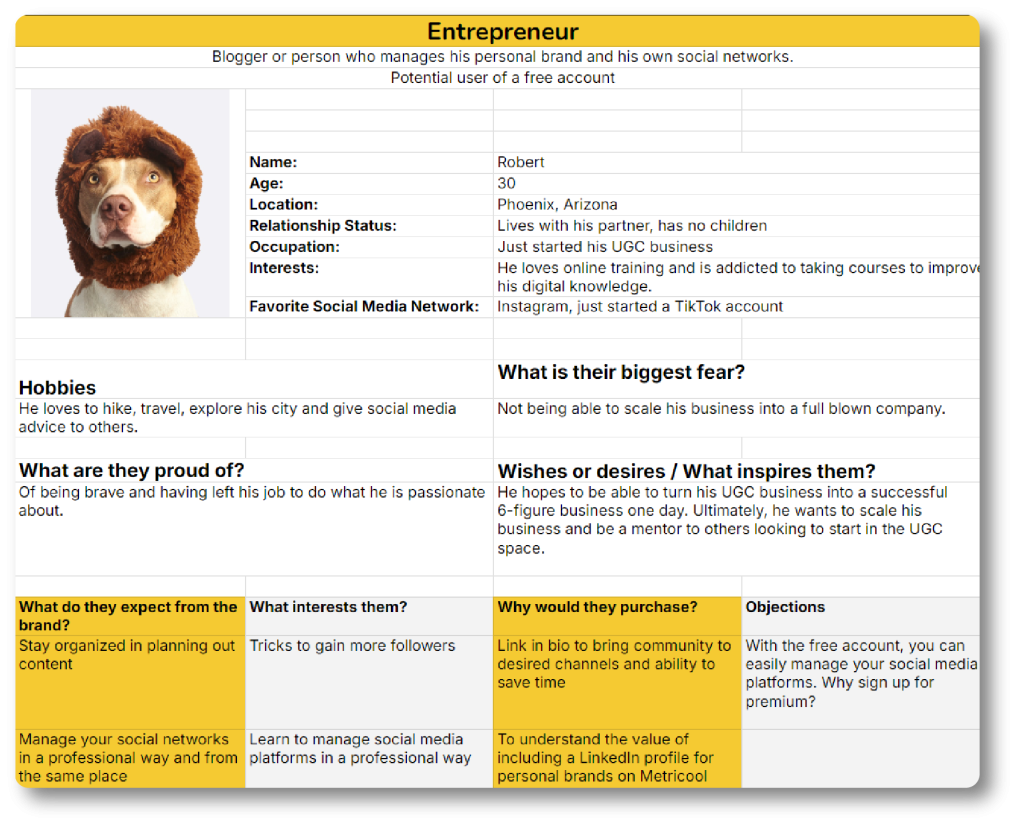
3.3. Identify your brand voice
Finding your brand voice will help your brand stand out on Instagram and connect with your audience. It will be the personality that ensures follower recognition and association with your brand and account.
How can you find this? This is where the Jungian archetypes come into play.
Jung’s archetypes are universal behavior and personality models that resonate with the collective subconscious. As we see in the image, there are 12 main archetypes, like the Hero, the Sage, or the Explorer, in which each type has specific character traits, to help you classify your desired brand perception.
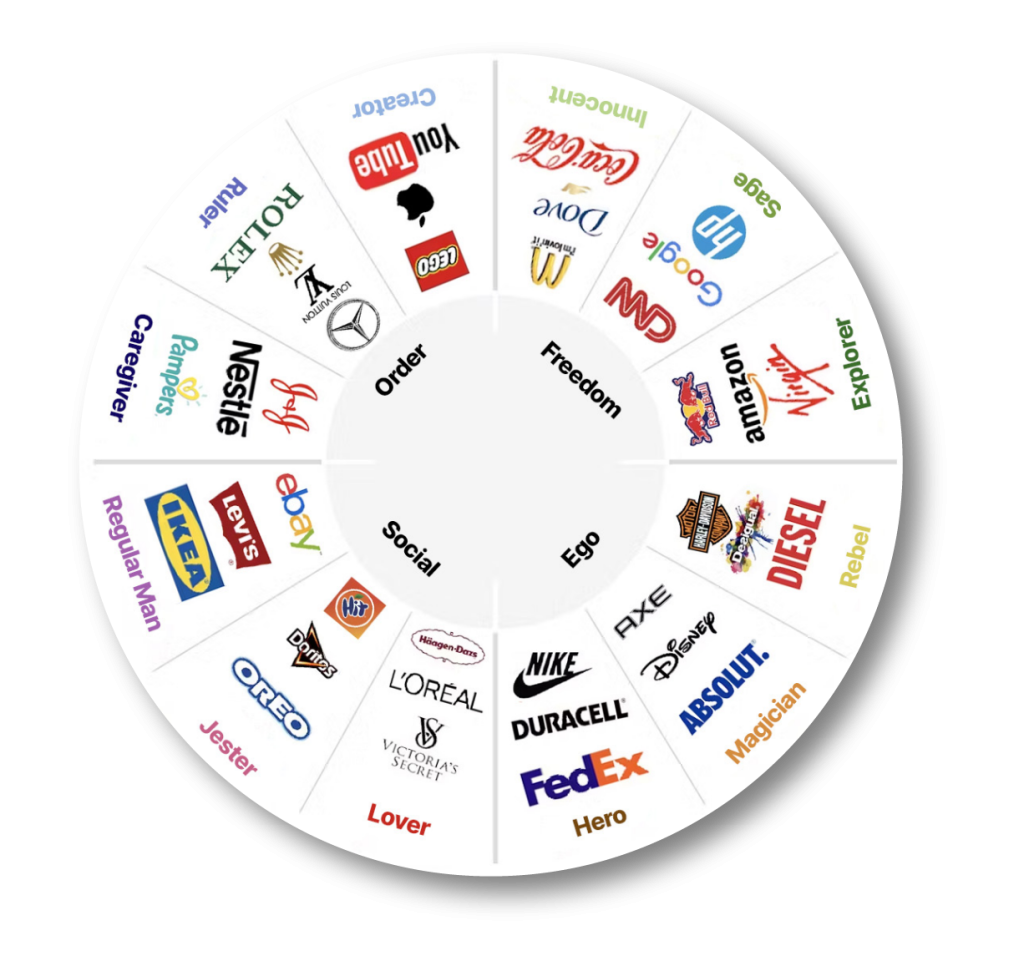
For example, if your brand aligns with the Creator archetype, your voice will deliver innovative, inspiring, and artistic messaging dynamics. The Caregiver, as another example, resembles empathy, protection, and consumer safety.
Reflect on your brand values, mission, and vision, to determine which of the 12 personalities best aligns with your identity.
Once you have identified your archetype, define the brand tone and communication style that will reflect in your content. This includes everything from the language you use to the colors and visual styles you display.
3.4. Determine your objectives
The last pillar of your Instagram strategy is your objectives. You cannot optimize your efforts or know what content to create if you don’t know what goals you want to achieve.
Think for a minute what you want to achieve on social media. Fame? Surpassing your competition? Global recognition?
These may be ambitious goals, but remember that not everything prevails on Instagram. In this step, we are referring to wishes and aspirations, but in a realistic, SMART case. This acronym refers to the questions in which each objective should define the answer:
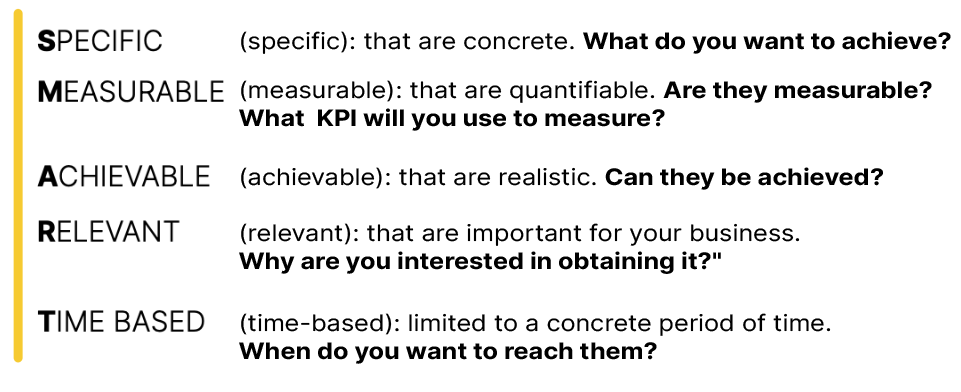
To understand how a SMART goal works, here’s a small exercise to determine if these three objectives meet the above criteria:
- Reach 100,000 accounts per month on Instagram to increase brand awareness.
- Go viral on social media to reach more people.
- Increase Instagram traffic to your online store by 5%.
Objectives must pass the SMART test, answering all of the above questions. Are they specific? Measurable? Achievable? Relevant? Time-bound?
Let’s see the answers. Objectives 2 and 3 are not SMART, because they don’t define each SMART element. While objective two doesn’t define a measurable figure or is bound by time, objective three doesn’t define the relevancy of this goal.
This module has supplied you with the basics of an Instagram strategy: understanding how the network functions, who you want to reach, how your brand will appear on social media, and what goals you want to achieve.
Feel like you need more of a visual? Check out this YouTube video for a breakdown of the 3 templates mentioned in this section.
Next, you will build the walls to your strategy, creating your content plan based on the fundamentals you just defined. Let’s go to the next section!